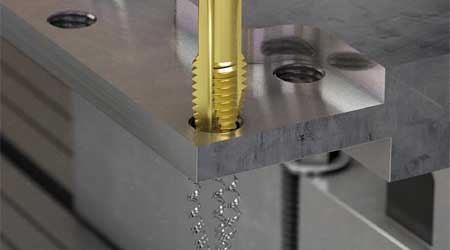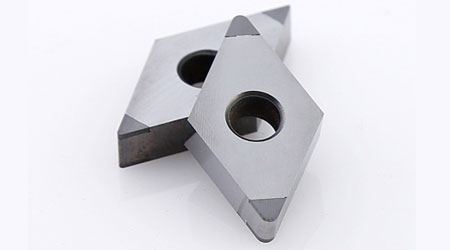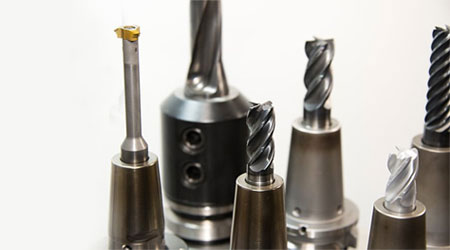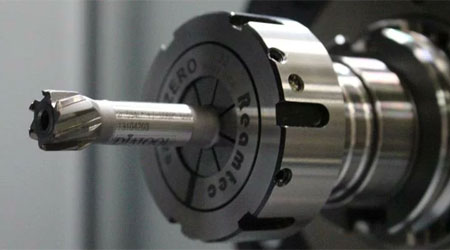18 Super Amazing CNC Cutting Tools for CNC Machining
Overview of CNC cutting tools
What are CNC cutting tools?
CNC cutting tool is a general term for a variety of tools that are used in conjunction with CNC machine tools (e.g. CNC lathes, CNC milling machines, CNC drilling machines, etc.). These tools are used for cutting in machinery manufacturing and have a variety of types and functions.

The role of CNC cutting tools
Cutting tools are indispensable tools in CNC machining, which are mainly used to remove excess material from the workpiece to form the desired size, shape and surface quality.
In CNC machining, the performance, wear resistance and cutting efficiency of cutting tools directly determine the smoothness of the machining process.
Diversity of cutting tools
There is a wide range of cutting tools for different machining tasks. For example, some tools are specialized in cutting external surfaces, while others are used for hole machining or thread cutting. The selection of CNC cutting tools should be based on the material of the workpiece, the machining requirements and the cutting characteristics of the tool.
Classification of CNC cutting tools
1. Classification by machining surface

These include turning tools, planing tools, milling cutters, external surface broaches, and files. They are primarily designed for machining the external surfaces of workpieces, such as turning, planing, and milling operations.

Tools such as drills, reaming drills, boring tools, reamers, and internal surface broaches fall under this category. Their main function is to process holes in workpieces, covering operations like drilling, reaming, boring, and honing.

Taps, plate taps, automatic thread cutters, thread turning tools, and thread milling cutters are included in this group. These tools are specialized for cutting threads on workpieces.

Hobbing cutters, gear shapers, shaving cutters, and bevel gear processing cutters are used in the production of gears and sim.

Includes denticulated circular saw blades, band saws, bow saws, cut-off lathes and saw blade milling cutters, etc., specially designed for cutting off workpieces in operations such as sawing and severing.
2. Classification by cutting motion
These tools are designed to handle a wide array of machining tasks. They include turning tools, planers, milling cutters, boring tools, drills, reaming drills, reamers, and saws. Typically, they are used for machining external surfaces, holes, and threads, offering great versatility across different applications.
Forming tools are characterized by cutting edges that match or closely resemble the shape of the workpiece section being machined. These tools are ideal for producing specific shapes on workpieces. Include shaped turning tools, shaped planers, shaped milling cutters, broaches, tapered reamers, and various threading tools.
Specialized in machining the tooth flanks of gears and similar components, spreading tools utilize the spreading method for cutting. Examples of such tools include hobbing cutters, gear shaping cutters, shaving cutters, bevel gear planing cutters, and bevel gear milling cutter discs.
Structure and working principle of CNC cutting tools
CNC cutting tool consists of two main parts: clamping part and cutting part.
- Clamping part: used to fix the tool to ensure that the tool works stably during the machining process.
- Cutting part: responsible for the actual cutting operation, usually including the cutting edge and chip removal structure. The design of the chip removal structure directly affects the cutting efficiency and stability of the tool.
According to the way the tool is manufactured, CNC tools can be divided into three common structures:
- Integrated tool: the cutting edge and the tool body are molded in one piece, with a simple structure, suitable for high-precision machining.
- Welding type tool: the blade is fixed on the tool body by welding, suitable for occasions where the blade needs to be replaced.
- Mechanical clamping tool: the blade is mounted on the tool body through a clamping structure, which is easy to replace and adjust, and is suitable for mass production.
Each of these structural forms has its own characteristics, and choosing the right type of tool according to machining requirements can improve CNC machining efficiency and machining quality.
Material of cutting tools
The materials used for CNC cutting tools must possess high hardness, wear resistance, and heat resistance to effectively meet the demands of various CNC machining applications. Commonly used tool materials include:
1. Carbide

Cemented carbide, made from tungsten and cobalt, is known for its extreme hardness and wear resistance. It’s ideal for cutting hard materials on CNC lathes and milling machines, especially high-strength or high-hardness materials.
2. HSS (High-Speed Steel)

HSS, containing tungsten and molybdenum, offers good hardness and heat resistance. It’s commonly used for machining stainless steel, hard alloys, and other tough materials, especially in complex or fine cutting tasks.
3. Ceramics

Ceramic tools are very hard and heat-resistant, ideal for machining high-hardness materials with poor toughness. While they offer high cutting efficiency, they are brittle and expensive.
4. PCD

PCD (Polycrystalline Diamond) is the hardest material, perfect for cutting glass, quartz, and other precision materials. It has a long lifespan and is great for high-precision CNC machining, though it’s costly.
5. CBN

CBN (Cubic Boron Nitride) is highly hard and heat-resistant, making it suitable for machining hard materials like hardened steel. Its excellent thermal stability and chemical resistance make it effective for CNC milling, but its lower strength limits some uses.
Common CNC cutting tool types and applications
1. Turning Tools

Turning tool is one of the most commonly used cutting tools in CNC lathe, suitable for machining workpieces such as outer circle, inner hole and end face. Turning tools have good cutting performance and can meet the needs of high-speed and high-precision machining.
2. Milling Cutter

Milling cutters are commonly used on CNC milling machines for machining complex surfaces such as flat surfaces, grooves and contours. According to the different shapes, milling cutters can be categorized into face milling cutters, end milling cutters, ball end milling cutters and so on.
3. Drill Bits

Drills are mainly used for hole machining and are the most common tools for hole machining. CNC drills usually have high accuracy requirements and are used to machine holes of various diameters.
4. Reaming Drills

Reamer drills are used to enlarge the diameter of a hole to ensure accuracy and dimensional stability.
Summary
CNC cutting tools play a crucial role in modern manufacturing. Selecting the right tool can significantly enhance machining quality and efficiency. As new materials and technologies advance, the cutting tool industry is evolving toward higher performance, greater functionality, and smarter solutions, offering more options for machining.
In practice, choosing the right tool and using it properly boosts productivity, reduces costs, and ensures product quality. This article aims to give you a clearer understanding of CNC cutting tool types, structures, materials, and future trends. Mastering this knowledge will help you achieve better results in CNC machining, improve efficiency, and optimize your production process.
